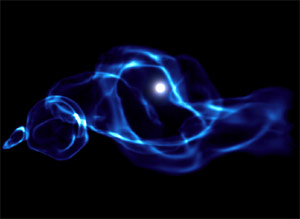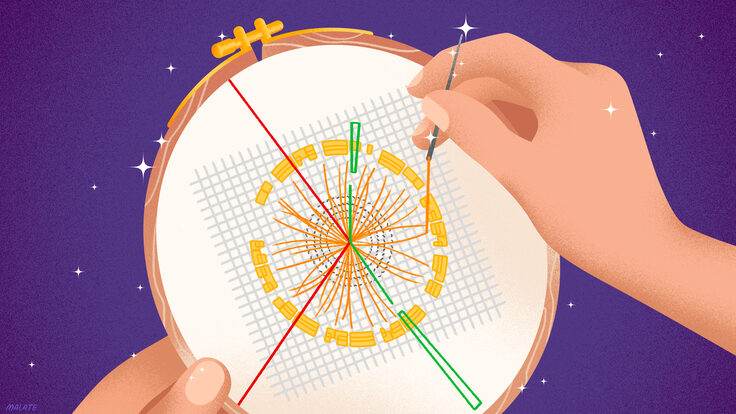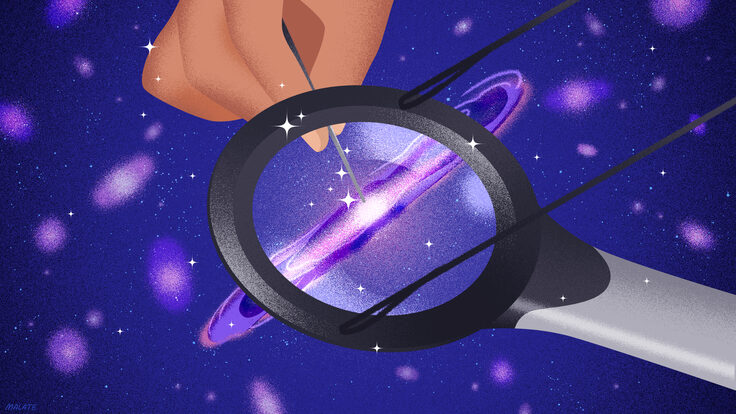A black hole, in white, interacts with gas, in blue, about 200 million years after the big bang. Click image to see simulation, both courtesy of Marcelo Alvarez, John H. Wise and Tom Abel.
In the infant universe there were no stars. Less than a billion years later, stars not only existed, but some had also collapsed into supermassive black holes, with a million to a billion times the mass of our sun.
Astrophysicists have long assumed that the first black holes quickly put on weight as they gobbled up surrounding gas. But supercomputer simulations at the Kavli Institute for Particle Astrophysics and Cosmology suggest otherwise.
From a press release in SLAC Today:
In the simulation, clouds of gas left over from the Big Bang slowly coalesced under the force of gravity, and eventually formed the first stars. These massive, hot stars burned bright for a short time, emitting so much energy in the form of starlight that they pushed nearby gas clouds far away. Yet these stars could not sustain such a fiery existence for long, and they soon exhausted their internal fuel. This caused one of the stars in the simulation to collapse under its own weight, forming a black hole located in a pocket of emptiness. With very little matter in the near vicinity, this black hole was essentially "starved" of food on which to grow.
"Quasars [extremely strong sources of radiation] powered by black holes a billion times more massive than our sun have been observed in the early universe, and we have to explain how these behemoths could have grown so big so fast,” said [Marcelo] Alvarez. "Their origin remains among the most fundamental unanswered questions in astrophysics."
One explanation for the existence of supermassive black holes in the early universe postulates that the first black holes were "seeds" that grew into much larger black holes by gravitationally attracting and then swallowing matter. But in their simulation, Alvarez, Abel and Wise found that such growth was negligible, with the black hole in the simulation growing by less than one percent of its original mass over the course of a hundred million years.







